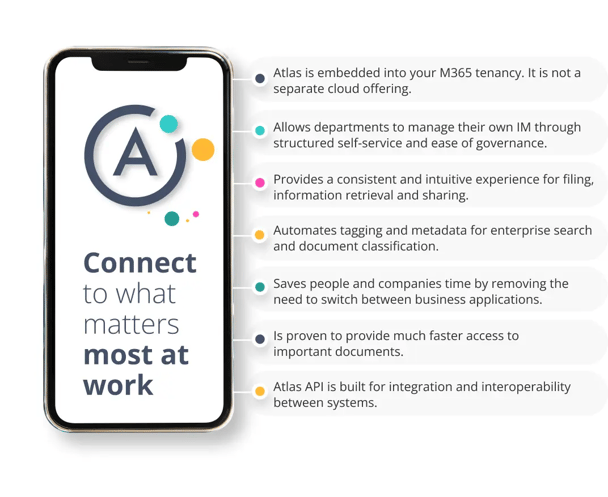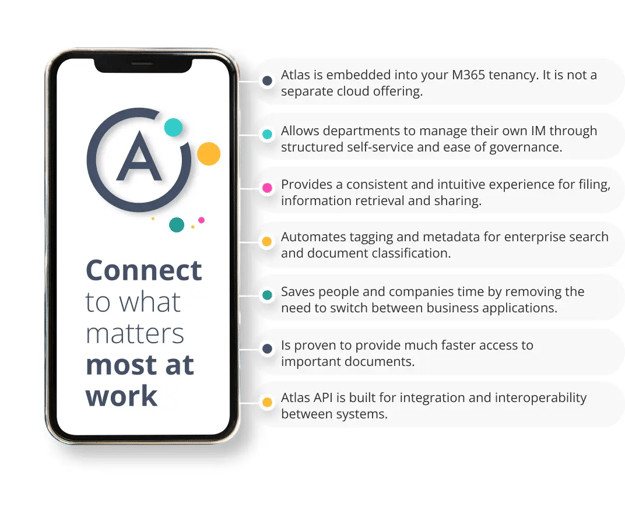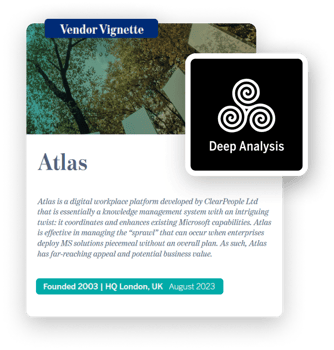Katya Linossi, Co-Founder and CEO
More blogs by this author
Katya Linossi, Co-Founder and CEO
More blogs by this authorNumerous businesses rely on Microsoft 365 for collaboration, productivity, and content storage. While it's a powerful platform, managing content within Microsoft 365 can quickly spiral into chaos if not properly organized and governed. This phenomenon is known as "content sprawl." In this blog, we'll explore what content sprawl is, its challenges, and most importantly, effective strategies to manage content sprawl in Microsoft 365 and optimize your productivity.
Conclusion on managing content sprawl in SharePoint and Microsoft 365

Content sprawl refers to the uncontrolled growth of digital content/data, often resulting in disorganization, inefficiency, and compliance risks. In Microsoft 365 (M365), content sprawl can manifest in various ways, including:
Before addressing content sprawl, it's crucial to recognize the challenges it poses:
Content management in Microsoft 365 can be a challenging task due to the sheer volume and variety of content that organizations generate and store. With multiple teams and departments creating and collaborating on documents, presentations, spreadsheets, and other files, it's easy for content to become disorganized and difficult to find. Additionally, the decentralized nature of Microsoft 365 can lead to content duplication and version control issues.
To effectively manage content in Microsoft 365, organizations need to understand these challenges and implement strategies to overcome them. By doing so, they can ensure that their content is organized, easily accessible, and up to date.
Now, let's delve into strategies and solution to manage content sprawl effectively in Microsoft 365.
One of the key strategies to manage content sprawl in SharePoint and Microsoft 365 is to implement a centralized content organization strategy. This involves establishing a clear structure and hierarchy for organizing content, such as creating folders, libraries, and sites based on departments, projects, or themes.
Content governance of both SharePoint and Microsoft 365 plays a crucial role in managing content sprawl, as it establishes rules, policies, and guidelines for content creation, sharing, and collaboration. By implementing content governance practices, organizations can ensure that content is created and managed in a controlled and structured manner.
Content governance also promotes collaboration and communication by providing a framework for teams to work together effectively. It establishes permissions and access controls, defines content approval processes, and ensures that content is shared securely and appropriately.
Another best practice for managing content in Microsoft 365 is to leverage metadata and tags for efficient content retrieval. Metadata refers to additional information that can be attached to content, such as author, creation date, keywords, and file type. Tags, on the other hand, are labels that can be assigned to content to categorize and classify it.
By properly assigning metadata and tags to content, organizations can enhance searchability and enable users to quickly locate relevant information. For example, by tagging documents with project names or client names, users can easily filter and retrieve content related to specific projects or clients.
All content saved in SharePoint is tagged. At minimum with the file name, as well as details about created and modified the document and date/time for those events. There are huge advantages to be had, if you can extend this and apply a common set of tags (SharePoint Document Library Columns) that your users tag against. Where it makes sense, using the Microsoft 365 Term Store as a source for your tags adds additional benefit as you can ensure consistency of the tag values.
Practically speaking an example of this could be that project related documents can be tagged with the project name or project code. Just that alone is a huge benefit when providing good search experiences or when filtering documents.
Following through on the example above, you would configure the Document Library as follows from the Library Settings:
Read more: Best practices for SharePoint Document Libraries
The use of automated tools for content classification and tagging represents a significant advancement in the way businesses manage and organize their vast amounts of digital information. These tools often leveraging artificial intelligence (AI) and machine learning, can efficiently categorize, tag, and organize content based on predefined criteria or patterns learned from data. This automated approach to classification and tagging not only enhances accuracy but also significantly reduces the time and effort required compared to manual methods.
One of the primary benefits of using automated tools for content classification is the ability to handle large volumes of data consistently and quickly.
Atlas automates complex governance tasks and reduces the need for manual tagging. See below for more information on Atlas

Overcoming content sprawl is an ongoing effort. Here are some actionable steps:
Managing content sprawl within Microsoft 365 is essential for maintaining productivity, ensuring compliance, and minimizing costs. By implementing clear strategies, educating users, and enforcing governance policies, organizations can regain control of their digital content and thrive in the digital age.
Remember, content management is an ongoing process, requiring continuous evaluation and adjustment. With the right approach, your organization can conquer content sprawl and harness the full potential of Microsoft 365.

Deep Analysis Report 2023
Atlas is leading the way in managing content sprawl in Microsoft 365 by offering a centralized, integrated solution that enhances searchability, customization, governance, collaboration, and provides valuable insights.
Centralized Content Management: Atlas facilitates centralized content management within the Microsoft 365 ecosystem. It provides a unified platform where all types of content - documents, Microsoft Teams conversations, and more - can be stored and accessed. This centralization helps in reducing duplication and ensures that all team members are working with the most current and relevant information.
Integration with Microsoft 365: Atlas is designed to work seamlessly with Microsoft 365 applications. This integration means that users can leverage familiar tools like SharePoint, Teams, and OneDrive, but with enhanced capabilities provided by Atlas.
Enhanced Search Capabilities: One of the key features of Atlas is its advanced search functionality. This reduces the time wasted in navigating through a cluttered and sprawling content landscape.
Customizable Workspaces: Atlas allows the creation of tailored digital workspaces. These can be customized according to the needs of different teams or projects, ensuring that relevant content is easily accessible, and non-relevant content is kept out of sight, thereby managing sprawl effectively.
Governance: With its robust governance tools, Atlas helps organizations to enforce policies and ensure compliance.
Collaboration and Communication Enhancement: By providing a platform where employees can easily share and collaborate on content, it reduces the need for multiple versions of the same document and keeps everyone on the same page.
Analytics and Insights: Atlas provides valuable analytics and insights into how content is being used within the organization. This data can help in identifying and eliminating redundant or outdated content, further reducing sprawl.
Subscribe to our newsletter
This site is protected by reCAPTCHA and the Google Privacy Policy and Terms of Service apply.